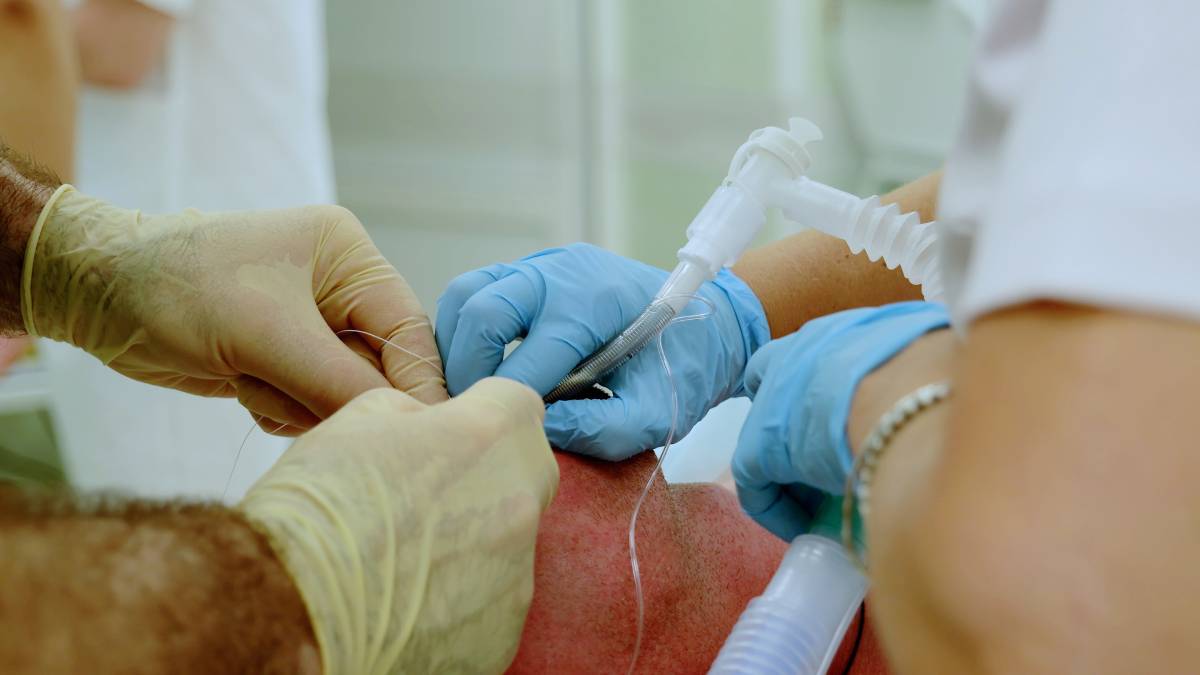Converting to Intubation During Anesthesia

Intubation during anesthesia is a critical procedure to secure airway patency, facilitate mechanical ventilation, and prevent respiratory decompensation. It is required when anesthesia compromises spontaneous breathing or when patients face acute respiratory failure. Intubation is often a surgical necessity in high-risk procedures that would be difficult for awake patients to tolerate without general anesthesia, such as thoracic and abdominal surgery. Intubation is also indicated for airway protection in cases of trauma, burns, or angioedema that risk airway obstruction. Other indications include respiratory failure characterized by severe hypoxemia or hypercapnia unresponsive to non-invasive support, as well as depressed consciousness, typically when the Glasgow coma score is less than 8. In some cases, the procedure may begin with less invasive airway monitoring and support, but anesthesia providers must be prepared in the case that converting to intubation is needed.
Intubation rates in outpatient surgical centers remain relatively low, with unplanned intubation reported in approximately 3% of general and vascular surgery patients, though ambulatory settings typically see lower rates due to stringent patient selection and increased use of regional anesthesia. The shift toward regional techniques minimizes general anesthesia requirements, reducing intubation needs while supporting faster recovery. Despite this trend, 2.1% of patients may present with unanticipated difficult airways, with 45.7% of these cases unrecognized preoperatively, underscoring the need for proficiency in advanced airway management.
The intubation process involves systematic steps to ensure safety. It begins with pre-oxygenation, administering 100% oxygen via mask for 3–5 minutes. This is followed by sedation and paralysis using induction agents and neuromuscular blockers. An endotracheal tube is advanced into the trachea, with placement confirmed by capnography and bilateral breath sounds. Finally, the tube is secured at the lips, and a chest X-ray may be used to verify its position.
Intubated patients require vigilant monitoring to prevent complications. This includes careful management of ventilator settings, such as tidal volume, positive end-expiratory pressure (PEEP), and fraction of inspired oxygen (FiO₂). Capnography ensures proper tube placement and monitors end-tidal CO₂. Sedation protocols, often using dexmedetomidine or propofol infusions, minimize ventilator dyssynchrony. Additionally, oral care protocols can lower ventilator-associated pneumonia rates. Due to the challenges and risks associated with intubation, clinicians often prefer to avoid it when the clinical scenario makes lighter forms of anesthesia viable and safe. However, converting to intubation during anesthesia may be necessary, and anesthesia providers should maintain mastery of this skill.
Extubation is considered when patients demonstrate adequate oxygenation and respiratory drive, pass spontaneous breathing trials, cough effectively, and are hemodynamically stable and conscious. The extubation process involves suctioning the oropharynx, deflating the endotracheal tube cuff, and removing the tube during inspiration to minimize laryngeal trauma. Post-extubation, oxygen is administered via nasal cannula or mask, and the patient is monitored for stridor or desaturation. Continuous pulse oximetry and respiratory assessments are critical for 24–48 hours following extubation.
Converting to intubation during anesthesia demands a high level of skill. It is critical that anesthesia providers carefully monitor patients and are able to rapidly respond to changes in airway and respiratory status.
References
- Russotto V, Myatra SN, Laffey JG, et al. Intubation practices and adverse peri-intubation events in critically ill patients from 29 countries. JAMA. 2021;325(12):1164-1172. doi: 10.1001/jama.2021.1727
- Jaber S, Amraoui J, Lefrant JY, et al. Clinical practice and risk factors for immediate complications of endotracheal intubation in the intensive care unit: a prospective, multiple-center study. Crit Care Med. 2006;34(9):2355-2361. doi: 10.1097/01.CCM.0000233879.58720.87
- Higgs A, McGrath BA, Goddard C, et al. Guidelines for the management of tracheal intubation in critically ill adults. Br J Anaesth. 2018;120(2):323-352. doi: 10.1016/j.bja.2017.10.021
- De Jong A, Rolle A, Molinari N, et al. Cardiac arrest and mortality related to intubation procedure in critically ill adult patients: a multicenter cohort study. Crit Care Med. 2018;46(4):532-539. doi: 10.1097/CCM.0000000000002925
- Mosier JM, Joshi R, Hypes C, et al. The physiologically difficult airway. West J Emerg Med. 2015;16(7):1109-1117. doi: 10.5811/westjem.2015.8.27467
